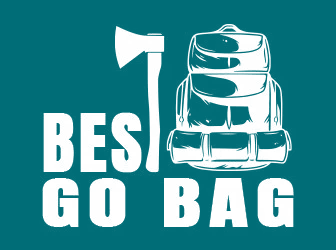During the first few months after COVID-19 made its unwelcome appearance in the U.S., many of us worried about a few things that don’t seem so troublesome now.
Among them were the packages food items came in. Whether it was groceries we bought at the store, carryout orders or deliveries.
Some of us looked very carefully at the food we selected at supermarkets. We closely examined the packaging of meals we picked up at restaurants or had delivered to our homes.
And when food items – or anything we ordered, for that matter – were delivered by Amazon, UPS or another service, we were advised to leave the box on the front porch for 24 hours. And then spray it with disinfectant before opening it.
We’ve had your back on this
Eventually, the CDC told us the coronavirus was very unlikely to spread from packaging, and we relaxed.
But when you think about it, people should have been thinking seriously about food packaging from day one.
We at 4Patriots certainly have been. I’ll get back to that in a moment.
Anything we put into our bodies can have a tremendous effect on our health. We should always make sure the food we eat has been safely protected before we consume it.
Protecting against food’s enemies
We’ve talked several times about food’s worst enemies and how to protect against them. So we won’t belabor the point here.
Suffice it to say they are:
- Air. The more oxygen that food is exposed to, the shorter its shelf life.
- Humidity. Moisture is another foe of food. That’s where bacteria can grow.
- Heat. It’s important to keep survival food in a cool place. The storage temperature for most food should be between 40 and 70 degrees Fahrenheit.
- Light. Light can deplete food’s vitamin content.
- Pests. In addition to keeping air and moisture out, an airtight food container will keep furry creatures out of your food.
Types of food packaging
What we want to focus on today are ways to package food so that those enemies are kept at bay. Among them are:
Food-Grade Buckets. This is one of the better ways to store food. These buckets come in gallon sizes (and even five-gallon), so they hold a lot of food.
Look for buckets with gamma lids, which form a more airtight seal. They are sturdy even when banged around.
Boxes and cans are fine for short-term food needs. But you can’t count on them for long-term storage. They are too easily damaged.
Glass jars. Some people like to keep certain foods such as grains in glass jars. They certainly look nice.
But unless you live in an area of the country that never experiences earthquakes or extreme storms, that might not be the best idea. Glass breaks easily. Also, you need to keep those glass jars away from light.
Plastic containers are inexpensive and easy to use, and pretty much unbreakable. After you’ve filled the container, place plastic wrap over the opening before putting the cap back on.
The downsides are that plastic can leach into food, and humidity is not well regulated. Pests have been known to chew through plastic.
Mylar pouches. Not only is it vital to keep air and moisture out, you also want a durable package that can take a few bumps over the years without bursting.
Look for sealed Mylar pouches with less than 2 percent oxygen content rather than cans or buckets. This is your best choice.
Food bars… packaged to perfection
One of the most popular 4Patriots food items is our Food Bars. They are made to U.S. Coast Guard standards for packaging.
We wrap them in advanced-polymer packaging to protect them against moisture, air and extreme temperatures.
Vacuum-packed and water-resistant, our Food Bars are designed to resist temperatures up to 300 degrees and as low as 40 below Fahrenheit. And unopened, they will stay fresh for up to five years.
Each compact bar contains 400 calories, and the concentrated nutrition is not thirst producing. They taste like shortbread with a hint of vanilla and lemon.
These food bars require no cooking, added water or a heat source. Just unwrap them and eat them. You can keep them in your vehicle, a backpack, your cabin, boat or RV.
Regardless of what food you eat – during this pandemic and after it finally fades away – make sure it’s packaged properly. Keeping food fresh and safe will always be important.


